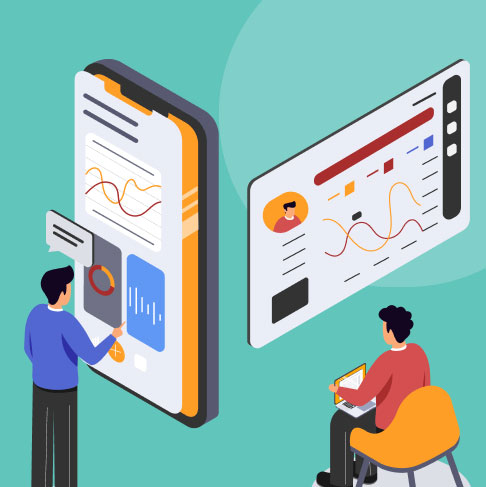How to Incorporate Mental Models in Product Design
February 2, 2023 | Read Time : 3 mins
Table of Contents
Think about what you’ll be doing first when you visit a new website or pick up a new phone. Do you have a certain expectation when you initially swipe across the mobile screen or glance at the website’s top navigation?
If you answered “yes,” it suggests you know how those user interfaces function in your head. When we communicate with the outside world, our brains continuously create cognitive structures to represent the information we learn.
What is a Mental Model
A Mental Model is what a user believes they already know about using a website, a phone, or a digital device. People employ the Mental Models they have created to facilitate their everyday life.
What is a Mixed-up Mental Model
When users cannot identify key differences between closely related parts of the system, then confused mental models develop. The discoverability of content within a product or application can also be impacted by muddled Mental Models.
How to fix Mental Models that aren’t aligned
Usability testing and UX research approaches may be used by UX designers to help prevent incorrect mental models. To correct mismatched Mental Models, designers might concentrate on interactive tours, careful onboarding, and real-time feedback.

How can Mental Models be applied
The responsibility of a designer is to make sure their designs satisfy the user’s requirements and align with their Mental Model and expectations. UX design best practices that designers might refer to include are:
Jakob’s Law
According to Jakob’s Law since people spend the majority of their time on other websites, they anticipate your website to function similarly. Designers should adopt design patterns that people are accustomed to adopting.
Card Sorting
Card sorting activities are a great way to determine how your users will categorize the data shown in your design.
Natural User Interface
As the user repeatedly picks up increasingly complicated interactions, the Natural User Interface (NUI) effectively becomes invisible and stays so. Natural User Interfaces provide the user with a feeling of immediate success. If a NUI feels natural to the user, it must suit their context. Swiping through the home screen pages on a smartphone running Android or iOS operating systems is an example of a NUI. Swiping between these displays is intuitive since it resembles turning pages in a paper book.
Conclusion
- A Mental Model is what a user thinks about how a user experience performs in the context of UX design.
- The knowledge users have gained from previous encounters with websites, mobile devices, and other interactive products are stored in their brains as Mental Models.
- Mental Models may be used by UX designers to create designs that people would understand.
- It is best to introduce new usability advancements in small doses.
- Users will make mistakes and become frustrated if there is a mismatch between their Mental Models and the user experience of a product.
- Through user and competitor research, assess the users’ current Mental Models.
Additionally, remember that product and UX design depend on Mental Models, which sometimes calls for effective communication between the two sides of the design process.






